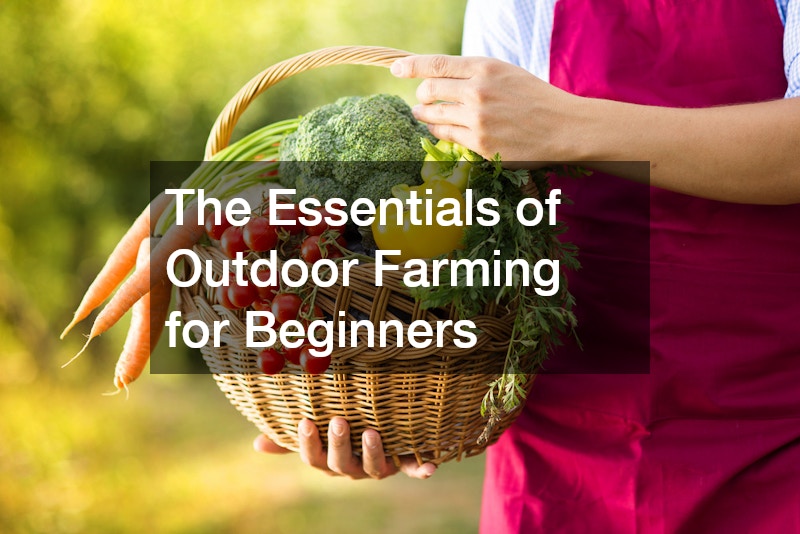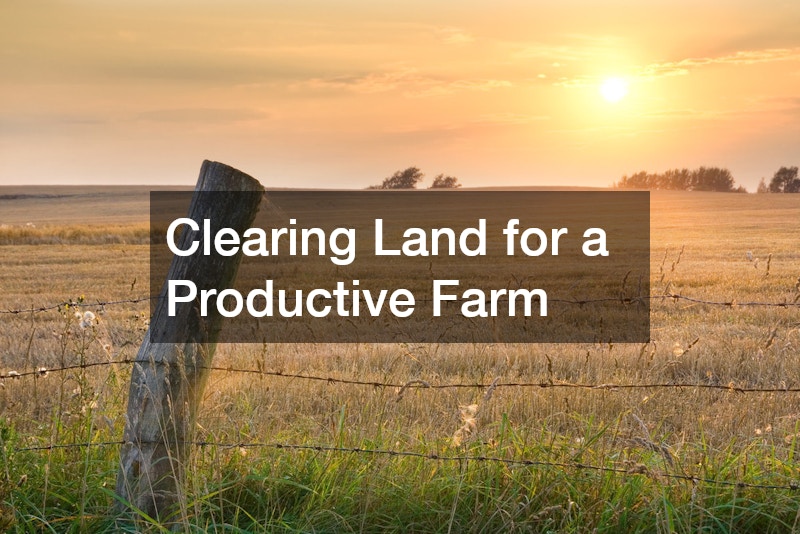Outdoor farming presents an exciting opportunity for individuals seeking a more self-sufficient lifestyle. Embracing the outdoor farming lifestyle not only provides fresh produce but also fosters a deep connection with nature. However, for beginners, embarking on this journey can seem daunting, filled with questions about land preparation, layout design, planting, and how to best utilize the space available. This article serves to demystify the process by outlining essential steps and considerations for successful outdoor farming.
From clearing out trees to creating a compact yet functional layout, outdoor farming requires careful planning and execution. Investing time in understanding essential aspects like building a barn, organizing storage sheds, and deciding on possible livestock can greatly enhance your farming experience. By following this guide, beginners can create a thriving outdoor farm that aligns with their goals and aspirations, all while promoting sustainability and community connection.
As outdoor farming gains popularity, many resources and professionals are available to assist newcomers. Whether it’s finding a shed builder, a landscaper, or getting tree removal, reaching out for help can make the transition smoother. By incorporating lessons and systems laid out in this article, one can elevate their outdoor farming experience from mere contemplation to actionable reality.
Clearing Land for a Productive Farm
The first step in outdoor farming is clearing land, which may require the help of a tree removal service. Assess your area to identify any trees or shrubs that need to be removed to make space for your future crops or structures. Removing unwanted vegetation can not only enhance the aesthetics of your outdoor farming project but also ensure enough sunlight reaches your plants.
Once the land is cleared, it’s crucial to test the soil quality. Outdoor farming thrives on good soil, which means considering soil amendments if necessary. You can have soil tested through local agricultural extensions that provide comprehensive analysis and advice on how to enhance your soil health.
After clearing the land and ensuring the soil is suitable, maintain the cleared area by regularly trimming any potential growth. This practice fosters a clean and manageable space for your outdoor farming activities. Moreover, consistent clearing helps prevent pests and weeds that could disrupt your planting process later on.
Designing an Efficient Farm Layout
Designing the layout of your outdoor farming space is a crucial step that determines the efficiency of your operations. Working with a landscape contractor can provide valuable insights into optimal arrangements for crop placement, water drainage, and sunlight exposure. A well-thought-out layout not only enhances productivity but also contributes to the aesthetic appeal of your outdoor farming experience.
Consider the type of crops you want to grow and integrate companion planting techniques for better crop yields. Companion plants can help in pest control, enhance nutrient uptake, and promote overall plant health. Your layout should also account for any amenities you might want to add, such as paths, seating, or even a small greenhouse.
In outdoor farming, it’s essential to utilize your space efficiently. Grouping crops based on their growth patterns and sunlight requirements maximizes space and encourages healthier plants. Take into consideration future growth and expansion plans that may require more space later, as having flexibility in your layout can be beneficial in the long run.
Prepping Your Yard for Planting Success
Now that you have a layout design, it’s time to prepare your yard for planting. Engaging with hydroseeding companies can help promote grass growth on any bare spots in your outdoor farming area. Hydroseeding is a quick and effective method for seeding large areas, ensuring a healthy lawn that is both functional and visually appealing.
Prepare your yard by removing any large rocks or roots that may interfere with planting. This preparation is crucial for allowing the proper drainage of water and provides the necessary room for roots to expand. Treating the land with organic compost or fertilizers can also enrich the soil and boost its productivity.
Once the ground is ready, consider placing borders or fences to enhance the organization of your outdoor farming area. This could protect your space from animals and add character to your landscape. Designing functional borders can also serve as support for various crops, like climbing vegetables or decorative plants.
Building a Barn for Storage and Shelter
As your outdoor farming venture develops, the construction of a barn or a barndominium can be a fantastic addition to your property. The barn serves multiple purposes, from housing equipment to sheltering animals and even storing crops. Collaborating with experts can help ensure that your barn meets building codes and is appropriately designed for your specific needs.
A barndominium can be an ideal living space that integrates comfortably with your outdoor farming lifestyle. It provides a cozy base from which to manage your outdoor farming activities, making it easier to oversee daily tasks. Structuring the interior to include workspace, storage, and living quarters can enhance efficiency and comfort on your farm.
Remember to consider the materials used in constructing your barn. Selecting durable materials ensures that your building withstands weather conditions and lasts for years. Investing in quality construction will ultimately save you money spent on repairs and upkeep in the long run.
Maximizing Storage With a Well-Designed Shed
Having adequate storage for tools and equipment is essential in outdoor farming, and this is where sheds come into play. A local shed builder can help you design a storage solution that fits both your needs and your available space. Properly organized storage is crucial, allowing you easy access to your tools and reducing time wasted searching for items.
Sheds can also serve specialized functions. For instance, you could designate a section specifically for farm equipment, while another area could be used for storing seeds or landscaping materials. This functional organization allows for effective management of your outdoor farming resources.
Maintaining cleanliness and orderliness within your shed helps prolong the lifespan of your equipment and tools. Regularly cleaning and organizing your shed not only creates a more efficient workspace but also promotes safety. That’s why, as part of your outdoor farming initiative, regular shed maintenance should be included in your routine tasks.
Deciding if Livestock is Right for Your Farm
An essential aspect of outdoor farming is determining whether you want to raise livestock. Before making this decision, consider factors such as space, resources, and your long-term plans. Consulting with a veterinarian can provide you with insights into which animal breeds would suit your needs and what care they require.
Animals can add another dimension to your farming experience, such as providing manure for fertilizer or offering companionship. However, they also require proper care and feeding, which can be demanding. Evaluating the time and effort you can reliably commit to animal husbandry is crucial before proceeding with this aspect of outdoor farming.
If you decide to include animals in your outdoor farming efforts, ensure you understand the infrastructure and facilities they require. This may include coops, feeding equipment, and fencing systems. Proper planning and setup can allow you to manage livestock healthily and efficiently.
Getting Your Soil Ready for Planting
With your outdoor farming space set up, the next step is preparing the land for planting. Utilizing a lawn tractor to break up the soil can save you significant time and effort. Proper soil cultivation ensures that nutrients are evenly distributed and makes it easier for seeds to germinate and grow.
After tillage, consider applying mulch to retain moisture and suppress weed growth. Engaging a mulch supplier can ensure you have high-quality mulch that meets your farming requirements. Mulching serves as a protective barrier for your planting areas, helping to create an optimal environment for plant growth.
Furthermore, irrigation is a key factor in preparing your land for planting. Setting up an adequate watering system can prevent plant stress, ensuring consistent growth. Researching various irrigation methods can help you choose the best system compatible with your outdoor farming goals.
Essential Tools and Supplies for Farming
Before you commence planting, it’s essential to gather the necessary farm equipment that you will need for outdoor farming. Consider tools such as shovels, wheelbarrows, and seeders, which will greatly aid in efficiency and productivity. Planning prevents unnecessary delays once you are ready to begin your planting journey.
Besides basic tools, look into any protective gear you may require, such as gloves and boots that will keep you comfortable and safe while working outdoors. Depending on your farming scale, additional machinery like tillers and tractors may also be needed. Investing in a lawn tractor can help maintain your entire outdoor farming area with greater ease.
It is also worth checking with local agriculture suppliers, as they may provide resources that can help streamline your equipment needs. Building a relationship with local suppliers can result in savings on costs through discounts or special offers. By consolidating your supplies and equipment, you set a solid foundation for your outdoor farming success.
Mastering the Art of Planting
Blending Your Home With Your Farm’s Aesthetic
With your outdoor farming plot flourishing, it’s time to bring a cohesive design through the exterior painting of your home. A well-coordinated look between your house and farm enhances visual appeal and creates a pleasant living environment. Consider colors that complement the natural surroundings while reflecting your style.
Coordinate your exterior design with other features of your outdoor farming setup, such as the barn or any other structures. A unified visual theme encourages a sense of harmony in your farming lifestyle. Investing time into making the house match the overall design of your outdoor farming area can elevate the space and inspire creativity.
Lastly, don’t forget the maintenance of the exterior spaces of your home, as well as the structures on the property. Regular upkeep will help maintain the aesthetics and functionality you put into place. When everything is harmonious, it enhances the enjoyment of your outdoor farming journey.
In conclusion, outdoor farming presents an enriching opportunity that requires careful planning and execution for success. By following the detailed steps outlined in this article, beginners can clear land, design efficient layouts, and create functional spaces to enhance their farming activities. Each aspect covered, from collecting tools to planting techniques, collectively contributes to a productive outdoor farming venture.
Moreover, engaging local professionals, such as tree removal services, landscape contractors, and veterinarians, can create avenues for learning and support as you embark on this journey. With patience and dedication, one can create a thriving outdoor farming space that yields not just crops but also personal satisfaction and a connection with nature.
Finally, the outdoor farming lifestyle is a continual journey of adaptation and growth. By maintaining a solid understanding of the essentials and staying connected to both your land and community, you can fully embrace the joys of farming. As you step into outdoor farming, equipped with knowledge and passion, the rewards will surely be plentiful.





